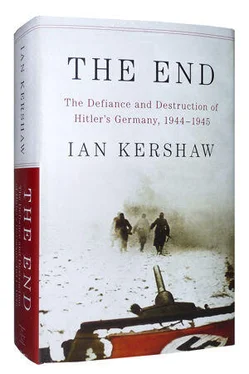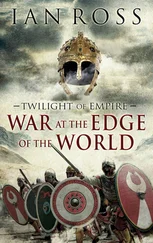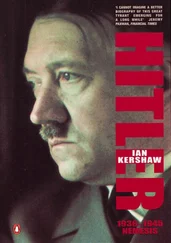—— Heinrich Himmler: Biographie , Munich, 2008.
—— Holocaust: The Nazi Persecution and Murder of the Jews , Oxford, 2010.
Lorenz, Georg, Die Penzberger Mordnacht vom 28. April 1945 vor dem Richter , Garmisch-Partenkirchen, 1948.
Loth, Wilfried, ‘Die deutsche Frage und der Wandel des internationalen Systems’, in DRZW , vol. 10/2.
Lüdde-Neurath, Walter, Regierung Dönitz: Die letzten Tage des Dritten Reiches , 5th edn., Leoni am Starnberger See, 1981.
Ludewig, Joachim, ‘Walter Model—Hitlers bester Feldmarschall?’ in Ronald Smelser and Enrico Syring (eds.), Die Militärelite des Dritten Reiches , Berlin, 1995.
Magenheimer, Heinz, Hitler’s War: German Military Strategy 1940–1945 , London, 1998.
Maier, Reinhold, Ende und Wende: Das schwäbische Schicksal 1944–1946. Briefe und Tagebuchaufzeichnungen , Stuttgart and Tübingen, 1948.
Malanowski, Wolfgang (ed.), 1945: Deutschland in der Stunde Null , Reinbek bei Hamburg, 1985.
Mammach, Klaus, Der Volkssturm: Bestandteil des totalen Kriegseinsatzes der deutschen Bevölkerung 1944/45 , Berlin, 1981.
Man, John, The Penguin Atlas of D-Day and the Normandy Campaign , London, 1994.
von Manstein, Erich, Lost Victories , London, 1982.
Mason, Timothy W., Sozialpolitik im Dritten Reich: Arbeiterklasse und Volksgemeinschaft , Opladen, 1977.
Mazower, Mark, Hitler’s Empire: Nazi Rule in Occupied Europe , London, 2008.
Meindl, Ralf, ‘Erich Koch—Gauleiter von Ostpreußen’, in Christian Pletzing (ed.), Vorposten des Reichs? Ostpreußen 1933–1945 , Munich, 2006.
—— Ostpreußens Gauleiter: Erich Koch—eine politische Biographie , Osnabrück, 2007.
Meldungen aus dem Reich , vol. 17, ed. Heinz Boberach, Herrsching, 1984.
The Memoirs of Field-Marshal Kesselring , Greenhill Books edn., London, 1997.
Merritt, A. J., and Merritt, R. L. (eds.), Public Opinion in Occupied Germany: The OMGUS Surveys, 1945–1949 , Urbana, Ill., 1970.
Messerschmidt, Manfred, Die Wehrmacht im NS-Staat: Zeit der Indoktrination , Hamburg, 1969.
—— ‘Krieg in der Trümmerlandschaft: “Pflichterfüllung” wofür?’ in Ulrich Borsdorf and Mathilde Jamin (eds.), Über Leben im Krieg: Kriegserfahrungen in einer Industrieregion 1939–1945 , Reinbek bei Hamburg, 1989.
—— ‘Die Wehrmacht in der Endphase: Realität und Perzeption’, Aus Parlament und Zeitgeschichte , 32–3 (1989).
—— ‘Deserteure im Zweiten Weltkrieg’, in Wolfgang Wette (ed.), Deserteure der Wehrmacht , Essen, 1995.
—— ‘Die Wehrmacht: Vom Realitätsverlust zum Selbstbetrug’, in Hans-Erich Volkmann (ed.), Ende des Dritten Reiches - Ende des Zweiten Weltkriegs: Eine perspektivische Rückschau , Munich and Zurich, 1995.
—— Die Wehrmachtjustiz 1933–1945 , Paderborn, 2005.
—— and Wullner, Fritz, Die Wehrmachtjustiz , Baden-Baden, 1987.
Mierzejewski, Alfred C., The Collapse of the German War Economy, 1944–1945: Allied Air Power and the German National Railway , Chapel Hill, NC, 1988.
—— ‘When Did Albert Speer Give Up?’, Historical Journal , 31 (1988).
Miller, Michael D., and Schulz, Andreas (eds.), Gauleiter: The Regional Leaders of the Nazi Party and their Deputies , CD ROM (n.d.) ( c . 2004).
Mommsen, Hans, ‘Social Views and Constitutional Plans of the Resistance’, in Hermann Graml et al. , The German Resistance to Hitler , London, 1970.
—— ‘The Dissolution of the Third Reich: Crisis Management and Collapse, 1943–1945’, Bulletin of the German Historical Institute, Washington DC , 27 (2000).
—— ‘The Indian Summer and the Collapse of the Third Reich: The Last Act’, in Hans Mommsen (ed.), The Third Reich between Vision and Reality , Oxford and New York, 2001.
—— ‘The Dissolution of the Third Reich’, in Frank Biess, Mark Roseman and Hanna Schissler (eds.), Conflict, Catastrophe and Continuity: Essays on Modern German History , Oxford and New York, 2007.
Moore, Bob, ‘The Western Allies and Food Relief to the Occupied Netherlands, 1944–45’, War and Society , 10 (1992).
Moorhouse, Roger, Berlin at War: Life and Death in Hitler’s Capital 1939–45 , London, 2010.
Müller, Delia, and Lepschies, Madlen, Tage der Angst und der Hoffnung: Erinnerungen an die Todesmärsche aus dem Frauen-Konzentrationslager Ravensbrück Ende April 1945 , Berlin, n.d.
Müller, Klaus-Jürgen, ‘The Wehrmacht: Western Front’, in David Wingeate Pike (ed.), The Closing of the Second World War: Twilight of a Totalitarianism , New York, 2001.
Müller, Rolf-Dieter, ‘Albert Speer und die Rüstungspolitik im Totalen Krieg’, in DRZW, vol. 5/2.
—— ‘Der Zusammenbruch des Wirtschaftslebens und die Anfänge des Wiederaufbaus’, in DRZW, vol. 10/2.
—— ‘Das Deutsche Reich und das Jahr 1945: Eine Bilanz’, in DRZW, vol. 10/2.
—— ‘Speers Rüstungspolitik im Totalen Krieg’, Militärgeschichtliche Zeitschrift , 59 (2000).
—— Der Bombenkrieg 1939–1945 , Berlin, 2004.
—— ‘Der Feuersturm und die unbekannten Toten von Dresden’, Geschichte in Wissenschaft und Unterricht , 59 (2008).
—— and Ueberschär, Gerd R., Kriegsende 1945. Die Zerstörung des Deutschen Reiches , Frankfurt am Main, 1994.
—— and Volkmann, Hans-Erich (eds.), Die Wehrmacht: Mythos und Realität , Munich, 1999.
Müller, Sven Oliver, ‘Nationalismus in der deutschen Kriegsgesellschaft 1939 bis 1945’, in DRZW, vol. 9/2.
Münkler, Herfried, Machtzerfall: Die letzten Tage des Dritten Reiches dargestellt am Beispiel der hessischen Kreisstadt Friedberg , Berlin, 1985.
Nadler, Fritz, Eine Stadt im Schatten Streichers , Nuremberg, 1969.
Neander, Joachim, Das Konzentrationslager ‘Mittelbau’ in der Endphase der nationalsozialistischen Diktatur , Clausthal-Zellerfeld, 1997.
—— Gardelegen 1945: Das Ende der Häftlingstransporte aus dem Konzentrationslager ‘Mittelbau’ , Magdeburg, 1998.
Nebelin, Manfred, ‘Nazi Germany: Eastern Front’, in David Wingeate Pike (ed.), The Closing of the Second World War: Twilight of a Totalitarianism , New York, 2001.
Neitzel, Sönke, ‘Der Bedeutungswandel der Kriegsmarine im Zweiten Weltkrieg’, in Rolf-Dieter Müller and Hans-Erich Volkmann (eds.), Die Wehrmacht: Mythos und Realität , Munich, 1999.
—— Abgehört: Deutsche Generäle in britischer Kriegsgefangenschaft 1942–1945 , Berlin, 2005.
—— Tapping Hitler’s Generals: Transcripts of Secret Conversations, 1942–45 , Barnsley, 2007.
Die Niederlage 1945: Aus dem Kriegstagebuch des Oberkommandos der Wehrmacht , ed. Percy Ernst Schramm, Munich, 1962.
Noble, Alastair, Nazi Rule and the Soviet Offensive in Eastern Germany, 1944–1945: The Darkest Hour , Brighton and Portland, Ore., 2009.
Nofi, Albert A. (ed.), The War against Hitler: Military Strategy in the West , Conshohocken, Pa., 1995.
Nolzen, Armin, ‘Die NSDAP, der Krieg und die deutsche Gesellschaft’, in DRZW, vol. 9/1.
—— ‘Von der geistigen Assimilation zur institutionellen Kooperation: Das Verhältnis zwischen NSDAP und Wehrmacht, 1943–1945’, in Jörg Hillmann and John Zimmermann (eds.), Kriegsende 1945 in Deutschland , Munich, 2002.
—— ‘Charismatic Legitimation and Bureaucratic Rule: The NSDAP in the Third Reich, 1933–1945’, German History , 23 (2005).
Читать дальше












